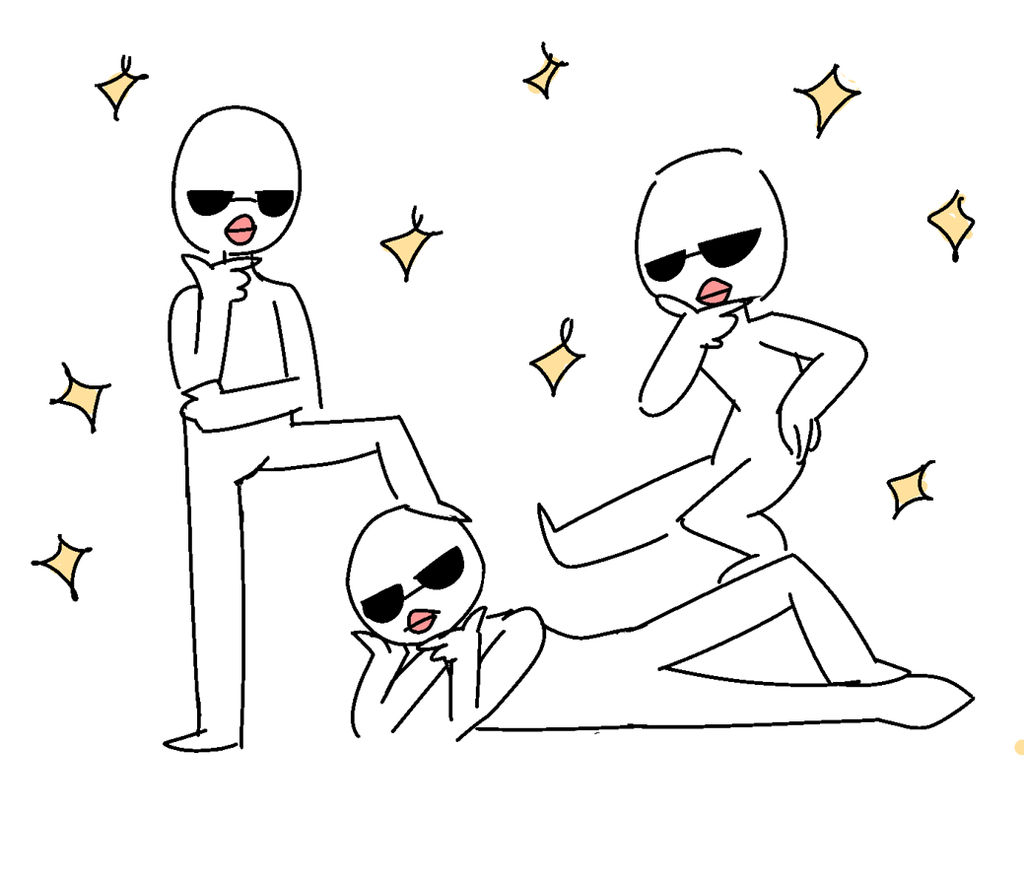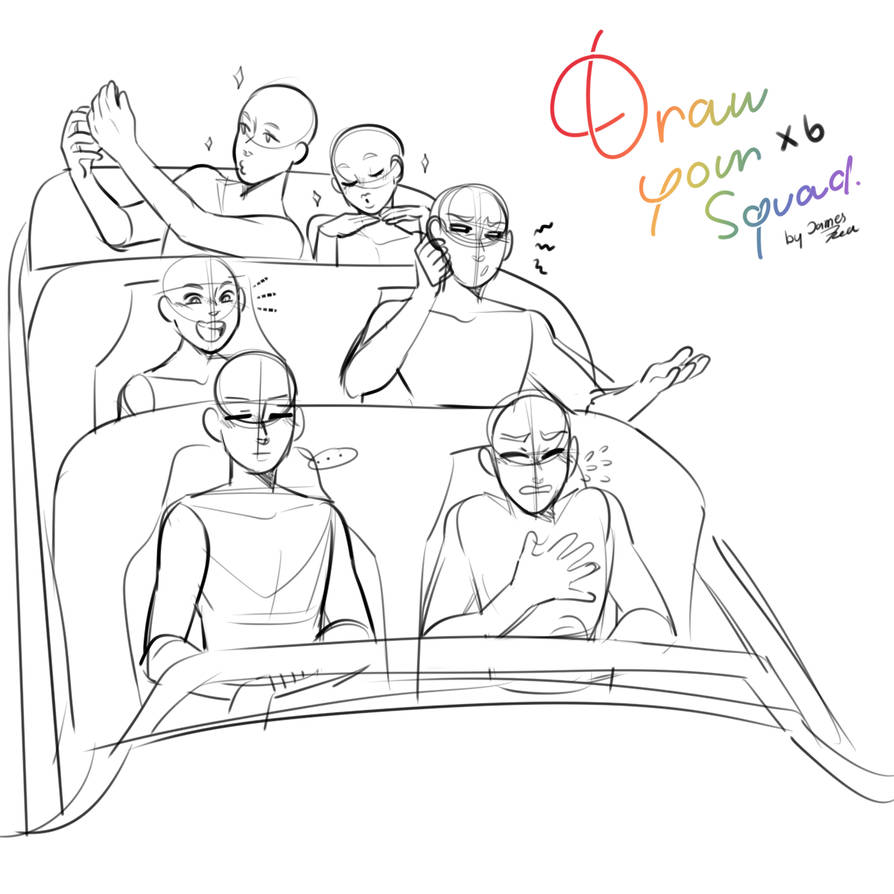One Person Drawing Base explores the burgeoning world of solo artistic creation using personalized foundational structures. This guide delves into the concept, encompassing diverse interpretations, practical applications, and creative possibilities. From defining the core principles to crafting your own base and utilizing it across various art styles, we examine the potential of this unique approach to drawing.
We will investigate different types of bases, compare their strengths and weaknesses, and provide a step-by-step guide to construction, adaptable for various skill levels. Furthermore, we’ll discuss how a one person drawing base can enhance the artistic process, explore modifications and technological integrations, and consider the formation of a supportive community around this innovative practice.
Understanding One Person Drawing Bases
Source: wixmp.com
One person drawing bases represent a novel approach to solo artistic creation, offering a structured framework for individual drawing practice. This article delves into the concept, types, creation, applications, and potential community aspects of one person drawing bases.
Defining “One Person Drawing Base”
A “one person drawing base” is a pre-structured system or template designed to facilitate and guide individual drawing exercises. It can take many forms, from simple physical setups to more complex digital interfaces. The core function is to provide a consistent, repeatable structure that encourages exploration of various drawing techniques and styles while minimizing the need for extensive initial setup.
Interpretations vary widely. It could be as simple as a pre-drawn grid on paper, acting as a guide for proportional studies. Conversely, it might involve a more elaborate arrangement of physical objects used as reference points, or a digital program with pre-set shapes and layers. The common thread is the provision of a structured environment tailored for solo drawing practice.
The burgeoning popularity of one-person drawing bases has opened new avenues for artists seeking commissions and collaborations. This increased visibility, however, also attracts less savory elements, as evidenced by recent reports of scams targeting artists advertising their services, some even found on sites like craigslist wen. Therefore, safeguarding personal information and utilizing secure payment methods remains crucial for artists utilizing one-person drawing bases to thrive.
Potential uses include improving observational skills, practicing perspective, developing consistent line work, experimenting with different media, and fostering creative exploration through structured prompts. The base itself becomes a tool for learning and refining artistic techniques.
A visual representation of a simple one person drawing base could be a rectangular wooden board with evenly spaced pegs along its edges, allowing for the attachment of drawing paper and reference materials at predetermined locations. This setup ensures consistent positioning and scaling for repeated drawing exercises.
Types of One Person Drawing Bases
One person drawing bases can be categorized based on their material, function, and complexity. These categories aren’t mutually exclusive; a single base might incorporate elements from several types.
| Type | Description | Advantages | Disadvantages |
|---|---|---|---|
| Physical Grid Base | A physical board or surface with a pre-drawn grid, often used for perspective studies or proportional drawings. | Simple, inexpensive, easily adaptable. | Limited flexibility, requires manual grid creation. |
| Modular Object Base | A collection of interchangeable objects (blocks, cylinders, etc.) used to create diverse compositions for still-life practice. | Versatile, allows for complex arrangements, promotes spatial awareness. | Can be expensive to set up, requires storage space. |
| Digital Template Base | A digital file (e.g., Photoshop document or Illustrator template) with pre-set layers and shapes, facilitating structured drawing exercises. | Highly versatile, easily modifiable, allows for layering and experimentation. | Requires digital proficiency, relies on software availability. |
| Combined Approach | Combines elements of physical and digital bases, such as using a physical object setup photographed and then digitally manipulated. | Combines advantages of both physical and digital methods, allowing for a richer artistic experience. | Requires more setup and technical knowledge. |
Creating a One Person Drawing Base
Creating a simple physical one person drawing base is achievable with readily available materials. This step-by-step guide demonstrates the process.
- Gather materials: A piece of sturdy cardboard or plywood, a ruler, a pencil, and a hole punch (or small nails and a hammer).
- Mark the grid: Use a ruler to mark evenly spaced points on the cardboard. The spacing will determine the size of the grid squares.
- Create the holes: Punch holes at each marked point, or carefully hammer in small nails.
- Prepare the drawing surface: Use drawing paper or thin canvas.
- Secure the paper: Use binder clips or small pegs to secure the drawing paper over the grid, ensuring it’s taut and aligned.
More complex bases can be constructed using various materials like wood, metal, or even 3D-printed components. Adapting this process for different skill levels involves adjusting the complexity of the base design. Beginners might opt for a simple grid, while more advanced users can experiment with modular systems or incorporate additional features.
Using a One Person Drawing Base in Art
One person drawing bases enhance various drawing techniques and art styles. The structured environment facilitates focused practice and experimentation.
- Perspective drawing: The grid provides a framework for accurately representing three-dimensional space.
- Proportional studies: The consistent grid helps maintain accurate proportions in figure drawing or object representation.
- Still life studies: A modular object base provides a structured approach to still-life compositions.
- Character design: Templates can be used to quickly sketch and refine character poses and proportions.
- Conceptual art: Digital templates can be used to explore abstract ideas through structured visual frameworks.
Variations and Extensions
The basic one person drawing base can be modified to enhance functionality and cater to specific artistic needs. Variations include adding adjustable components, integrating lighting systems for better shadow studies, or incorporating interactive digital elements.
Variations could include adding adjustable pegs for altering grid size, incorporating built-in rulers and protractors, or integrating a small light source to control shadow direction. Technology integration could involve using projection mapping to overlay digital elements onto a physical base, or creating a digital interface that interacts with a physical base through sensors.
Community and Resources
A community centered around one person drawing bases could foster collaboration and knowledge sharing. This could function through online forums, social media groups, or even physical workshops.
Online platforms like dedicated subreddits or Discord servers could host tutorials, share base designs, and facilitate discussions. Physical spaces could be established for collaborative drawing sessions or workshops focused on base creation and application. A community structure might include roles like administrators, moderators, tutorial creators, and experienced users offering guidance to newcomers.
Final Thoughts

Source: wixmp.com
Ultimately, the one person drawing base represents a versatile tool for artists of all levels, fostering creativity and personalized artistic expression. Whether you are a seasoned professional or a budding enthusiast, the exploration of this concept offers a unique pathway to enhance your artistic journey. The potential for innovation and community building surrounding this idea promises an exciting future for solo artistic endeavors.


